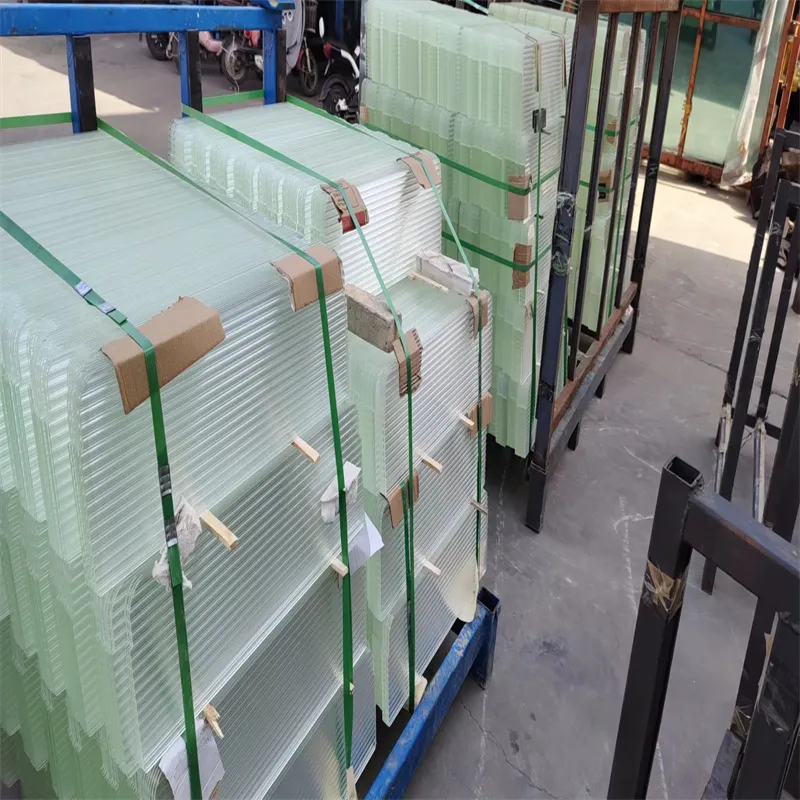Dec . 29, 2024 07:02 Back to list
Innovative Applications of Dichroic Glass Sheets in Art and Design
The Allure of Dichroic Glass Sheets A Colorful Exploration
Dichroic glass, with its mesmerizing play of colors, has captivated artists, designers, and consumers alike. This unique material is not only visually stunning but also demonstrates a fascinating interplay between light and color, making it a popular choice for various applications in art and industry. The term dichroic comes from the Greek words dichroos, meaning two colors, and refers to the glass's ability to exhibit two different colors when viewed from different angles or in varying light conditions.
The Science Behind Dichroic Glass
The enchanting effect of dichroic glass is the result of multiple layers of metallic oxide coatings applied to the glass surface. These microscopic layers create an optical interference effect that selectively reflects and transmits light. When light strikes the surface of the glass, some wavelengths are reflected while others are transmitted, resulting in a vibrant display of colors. For instance, a piece of dichroic glass might appear predominantly blue from one angle, but shift to shades of green and gold when viewed from another perspective.
This unique optical property is not only visually appealing but also scientifically fascinating, as it brings together principles of physics, art, and material science. The creation of dichroic glass involves precise control of the thickness and composition of the layers, allowing artisans and manufacturers to design glass that produces specific color effects.
Applications of Dichroic Glass
The versatility of dichroic glass has led to its widespread use in various fields. In the realm of art, many artists utilize dichroic glass in stained glass creation, jewelry making, and sculpture. The dynamic colors add a unique touch, transforming ordinary pieces into vibrant, eye-catching works of art. For instance, jewelers often incorporate dichroic glass into their designs, creating stunning pendants, earrings, and other wearable art that changes color and intensity depending on the light and the angles at which they are viewed.
dichroic glass sheets

In architectural design, dichroic glass has become increasingly popular in contemporary buildings, adding a modern and artistic flair to facades and interiors. When used in windows, partitions, or skylights, dichroic glass can create immersive light environments that change throughout the day, influencing the overall atmosphere of a space. This innovative use not only enhances the aesthetic appeal of buildings but also provides functional advantages by controlling light transmission and enhancing energy efficiency.
Furthermore, the automotive and aerospace industries have begun to explore the benefits of dichroic glass as well. In these fields, the ability to manipulate light and color can be crucial for both safety and aesthetics. By incorporating dichroic glass in vehicle windows and components, manufacturers can create products that are not only more visually appealing but also improve visibility and reduce glare.
The Cultural Impact of Dichroic Glass
Beyond its practical uses, dichroic glass has also made significant contributions to cultural expressions around the world. In many cultures, color holds deep significance, symbolizing various meanings and emotions. Dichroic glass, with its interplay of colors, allows for a unique form of expression that transcends traditional boundaries. Artists can convey complex themes and emotions through their use of color, while also engaging viewers on a sensory level as they interact with the changing hues.
Exhibitions showcasing dichroic glass often draw substantial interest, attracting both art enthusiasts and casual visitors. The captivating effects of this glass allow for a multi-dimensional experience that can elicit feelings of wonder and curiosity. As viewers move around a piece, they find themselves immersed in a dynamic interplay of color and light, prompting introspection and dialogue about both the art piece and their own perceptions.
Conclusion
Dichroic glass sheets represent a remarkable fusion of science, art, and technology. Their ability to play with light and color not only serves practical functions in various industries but also enriches cultural landscapes by offering new avenues of artistic expression. As the demand for unique and innovative materials continues to grow, dichroic glass stands out as a beacon of creativity, inspiring designers and artists to explore its possibilities. Whether you are an architect, artist, or simply someone who appreciates beauty, the enchanting world of dichroic glass holds endless opportunities for exploration and imagination.
-
Safety and Style with Premium Laminated Glass Solutions
NewsJun.24,2025
-
Reinvents Security with Premium Wired Glass
NewsJun.24,2025
-
Premium Float Glass Line for Modern Architecture
NewsJun.24,2025
-
Low Emissivity Glass for Energy-Efficient Architecture
NewsJun.24,2025
-
High-Performance Insulated Glass Solutions for Modern Architecture
NewsJun.24,2025
-
Elevates Interior Style with Premium Silver Mirror
NewsJun.24,2025
Related PRODUCTS














